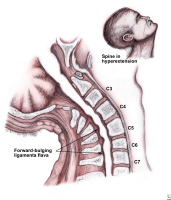Most people struggle with back pain at some point in their lives. According to the National Institutes of Health, back pain is the second most common neurological disorder in the United States — only headache1 is more common.
If you have back pain, the first step is to be properly assessed by your primary care provider. Back pain has many causes, from muscle strain to more serious conditions such as a herniated disc, spinal stenosis, spondylosisthesis, osteoporosis2, or a tumor, so it’s important to find out what is causing the back pain.
Here’s a look at 15 of the more popular natural remedies. Although more research is needed before any of these options can be recommended instead of conventional treatment, some of them may provide relief for mild to moderate pain, especially when used as part of a comprehensive treatment plan.
1) Acupuncture
A 2008 research review published in the journal Spine found “strong evidence that acupuncture can be a useful supplement to other forms of conventional therapy” for low back pain. Analyzing 23 clinical trials with a total of 6,359 patients, the review’s authors also found “moderate evidence that acupuncture is more effective than no treatment” in relief of back pain. The authors note that more research is needed before acupuncture can be recommended over conventional therapies for back pain.
How does acupuncture work? According to traditional Chinese medicine3, pain results from blocked energy along energy pathways of the body, which are unblocked when acupuncture needles are inserted along these invisible pathways.
Acupuncture may release natural pain-relieving opioids, send signals to the sympathetic nervous system, and release neurochemicals and hormones.
An acupuncture treatment generally costs between $60 and $120. Acupuncture may be tax-deductible (it’s considered a medical expense) and some insurance plans pay for acupuncture.
If you want to try acupuncture, plan on going one to three times a week for several weeks initially.
2) Massage Therapy
When many people have backaches and pain, the first thing they think of is massage. Indeed, a number of studies indicate that undergoing massage therapy may help soothe back pain.
In a 2009 research review published in Spine, researchers looked at 13 clinical trials on the use of massage in treatment of back pain. The review’s authors concluded that massage “might be beneficial for patients with subacute and chronic nonspecific low back pain, especially when combined with exercises and education.” Noting that more research is needed to confirm this conclusion, the authors call for further studies that might help determine whether massage is a cost-effective treatment for low back pain.
Also found to reduce anxiety4 and depression5 associated with chronic pain, massage therapy is the most popular therapy for low back pain during pregnancy.
3) Chiropractic
Back pain is one of most common reasons people see a chiropractor. Doctors of chiropractic use chiropractic spinal manipulation to restore joint mobility. They manually apply a controlled force to joints that have become restricted by muscle injury, strain, inflammation, and pain. Manipulation is believed to relieve pain and muscle tightness and encourage healing.
Chiropractic care involving spinal manipulation appears to reduce symptoms and improve function in patients with chronic low back pain, acute low back pain, and sub-acute low back pain, according to a research review published in the Journal of Manipulative Physiological Therapeutics. In their analysis of 887 documents (including 64 clinical trials), the review’s authors concluded that combining chiropractic care with exercise is “likely to speed and improve outcomes” and protect against future episodes of back pain.
4) Capsaicin Cream
Although you may not have heard of capsaicin before, if you’ve ever eaten a chili pepper and felt your mouth burn, you know exactly what capsaicin does. Capsaicin is the active ingredient in chili peppers.
When it is applied to the skin, capsaicin has been found to deplete substance P — a neurochemical that transmits pain — causing an analgesic effect.
For a 2011 research review published in the British Journal of Anaesthesia, investigators sized up the available research on the use of topically applied capsaicin in treatment of several types of chronic pain6. This included two clinical trials on back pain, both of which found that capsaicin helped reduce low back pain without causing notable side effects.
Capsaicin cream, also called capsicum cream, is available in drug stores, health food stores, and online. A typical dosage is 0.025% capsaicin cream applied four times a day. The most common side effect is a stinging or burning sensation in the area.
If possible, wear disposable gloves (available at drugstores) before applying the cream. Be careful not to touch the eye area or open skin. A tube or jar of capsaicin cream typically costs between $8 and $25.
5) Vitamin D
Chronic muscle pain can be a symptom of vitamin D deficiency. What’s more, some research suggests that treatment with vitamin D supplements may lead to clinical improvement in back pain symptoms among people with low initial concentrations of vitamin D, according to a 2005 report published in the British Medical Journal.
An essential nutrient available in certain foods (such as fortified milk and fish with small bones), vitamin D is produced naturally by the body during exposure to the sun’s ultraviolet rays. But since it’s difficult to obtain your recommended daily intake of D solely through dietary sources and sun exposure, many medical experts recommend increasing your vitamin D levels by taking a dietary supplement.





















